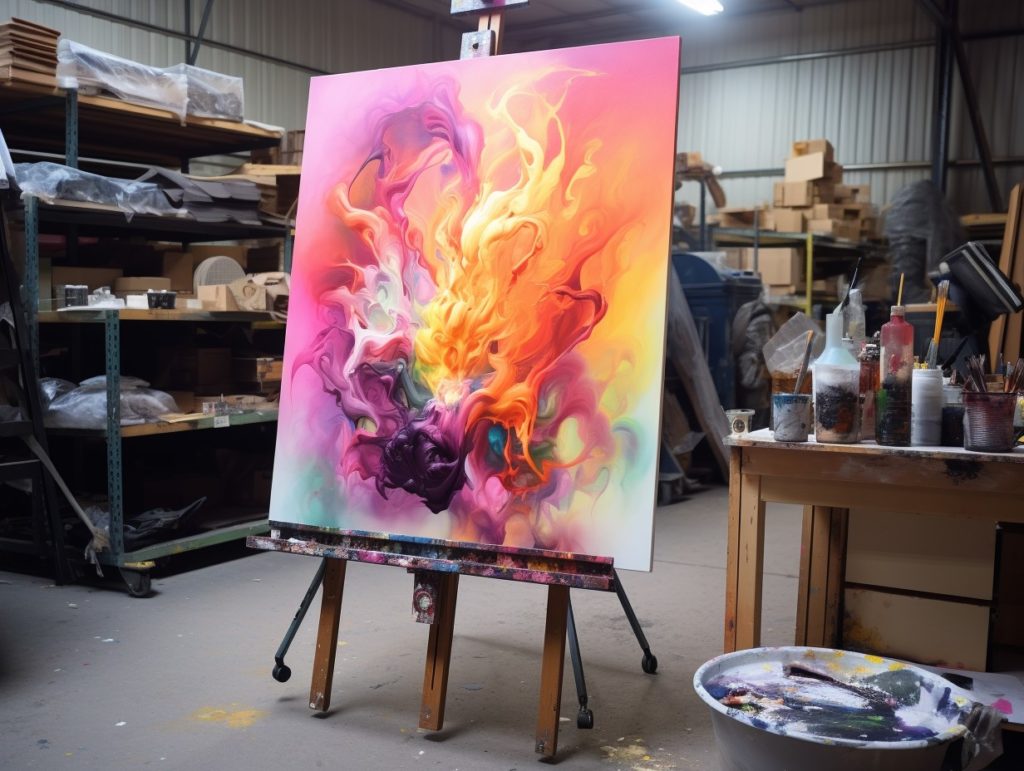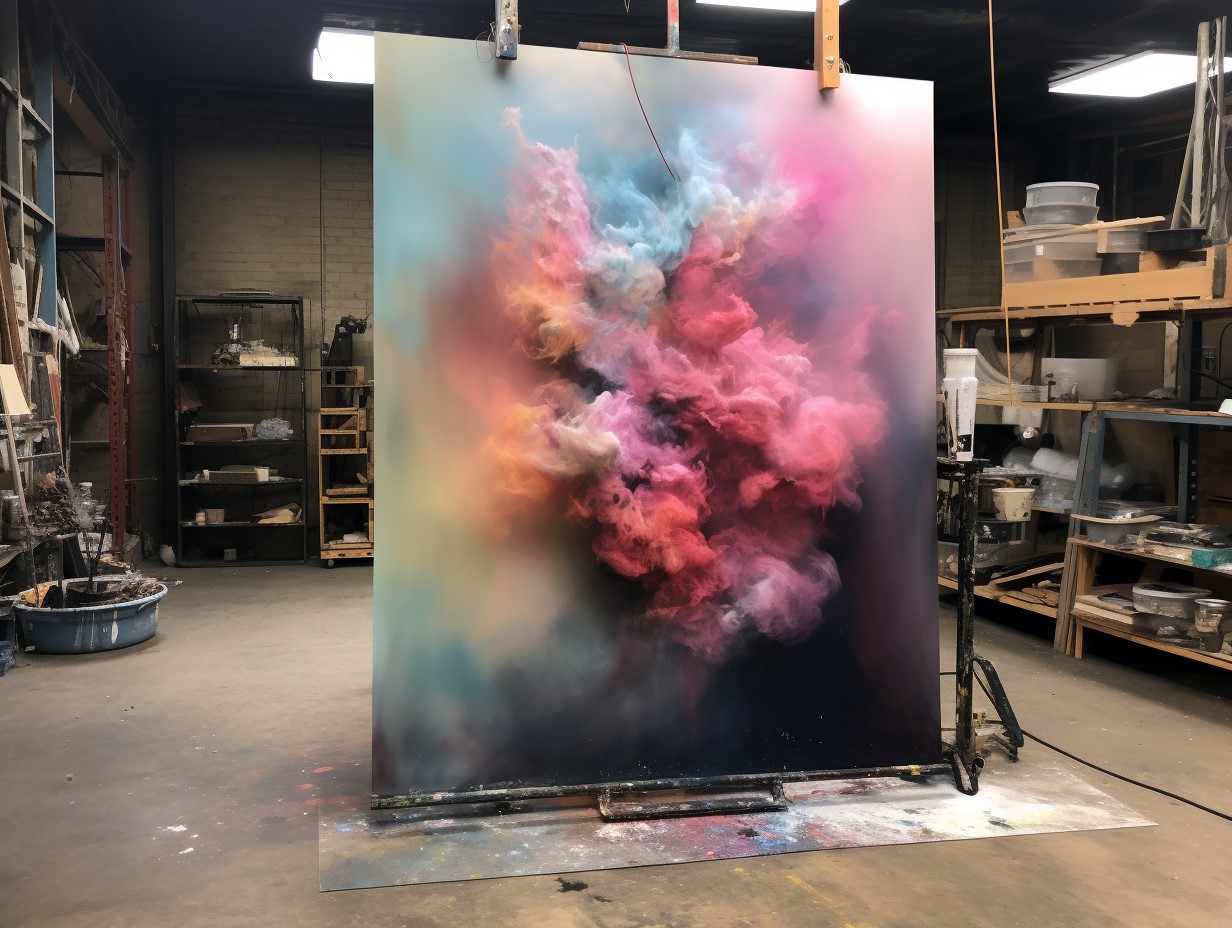Alcohol ink is a captivating and versatile medium, but what is it, and how can you get great results with this medium?
The style has gained popularity among artists worldwide for its ability to produce stunning, vibrant, and unpredictable results. You could argue alcohol ink is one of the most dynamic mediums, which is what makes it so exciting!
Alcohol ink is known for its fluidity and rich colors, and recent years has found its way into the creative hearts of many Australian artists.
Let’s take a look:
QUICK START GUIDE: How to use alcohol ink!
Without too much ado, the best way to understand how you use alcohol ink is a video:
For artists who would prefer a complete guide they can bookmark (CTRL + D), then here you go:
- Gather Your Supplies
- Alcohol inks
- Non-porous surfaces – Yupo paper, ceramic tiles, glass, or synthetic paper are popular choices.
- Isopropyl alcohol – You can use this to manipulate and dilute the inks.
- Brushes, droppers, or palette knives – For applying and spreading the ink.
- Protective gear – Gloves to protect your hands, especially if you’re working with a lot of alcohol ink. Recommended!
- Well-ventilated workspace – Alcohol ink fumes can be strong!
- Preparation
- Clean your chosen surface to ensure it’s free of dust and dirt.
- Protect your work area with a drop cloth or plastic sheet to catch any spills, especially when working at home.
- Application – A Beginners Guide!
- Start by shaking the alcohol ink bottles to mix the pigments.
- Apply small drops or splatters of ink directly onto the surface. You can layer different colours for unique effects.
- You can guess the final point – EXPERIMENT! Try different techniques like blowing on the ink, tilting the surface, or using alcohol-soaked brushes to blend and move the ink around. Use your imagination to discover unique styles, textures, and patterns.
- Drying and Fixative
- Alcohol ink dries quickly. Some artists use a hairdryer or even a heat gun (be careful) to speed up drying.
- To protect your artwork from smudging or fading, especially for work you’re really happy with, consider applying a fixative designed for alcohol inks once the piece is completely dry.
- Finishing Touches
- Once your alcohol ink art is dry and sealed, you can add additional details or highlights with other mediums like white gel pens, metallic inks, or acrylic paints. Again, use your imagination and experiment – these finishing touches are your opportunity to really define your art.
- You can also frame or seal your artwork with a clear, non-yellowing sealer if you plan to display it.
- Safety Precautions
- Work in a well-ventilated area to avoid inhaling fumes from the alcohol ink and isopropyl alcohol.
- Wear gloves to protect your hands from staining, especially if you’re working with highly pigmented inks.
- Experiment and Practice
- Alcohol ink is all about experimentation and embracing unpredictable results. Don’t be afraid to make mistakes and learn from them. If we’re not willing to learn from our mistakes, how will we become great artists?
- Keep a journal or sketchbook to record your favorite techniques and colour combinations for future reference.
- Inspiration and Learning
- Explore online resources, Instagram, Pinterest, books, and tutorials to learn new techniques and gather inspiration from other alcohol ink artists.
- Join art communities or social media groups to share your work, get feedback, and connect with fellow artists. Seek inspiration everywhere, and do your best to adapt it to your own unique style!
The benefits of using alcohol ink as a medium
Let’s shed some light on the unique qualities of alcohol ink. The pros. And the reasons this unique medium may suit you as a beginner or experienced artist alike.

The pros of alcohol ink:
Vivid Colors
Alcohol inks are renowned for their intense, saturated colours. They pop off the canvas like nobodies business.
As an artist you can achieve a wide range of hues, shades, and gradients by blending and layering the inks.
Fluid and Freeform
One of the most alluring aspects of alcohol ink is its fluidity. It flows and interacts with the surface in such exciting an unpredictable ways, allowing you to create organic, abstract, and mesmerising patterns.
Quick Drying
Alcohol ink dries rapidly, enabling you to work on multiple layers and add intricate details without waiting forever and a day. It’s a feature of alcohol ink which adds to the spontaneity and freedom of the medium.
Versatile Surfaces
Alcohol ink can be applied to various surfaces. If you want some ideas, then try Yupo paper, ceramic, glass, or even fabric. It’s a fantastic benefit of alcohol ink, allowing you to experiment, be creative, and expand your creative horizons.
Low Toxicity
Alcohol ink is relatively low in toxicity, making it a safer choice compared to some other art materials. That said, proper ventilation is still recommended when using alcohol-based products.
What about the downsides of alcohol ink?
As artists we know no medium is perfect, so it is only fair to cover the downsides (the cons) of alcohol ink:
Unpredictable Nature
While the unpredictability of alcohol ink can be an advantage, for some artists it can prove to be a challenge. Especially if you like more control over your work. Achieving specific results can be tricky, which means it’s not for everyone.
Difficult Corrections
Once applied, alcohol ink is challenging to rework or correct. Mistakes are less forgiving compared to traditional painting mediums. This can prove frustrating or costly if you find this the norm rather than the rule.
Limited Layering
Although alcohol ink allows for layering, excessive layering can quickly lead to muddiness and loss of vibrancy. As an artist you’ll need to strike a balance to maintain the brilliance of the colors.
Fumes and Ventilation
Alcohol ink gives off fumes. They’re not highly toxic but are fumes none-the-less. These can be irritating to the respiratory system, so worth avoiding if you commonly react to fumes.
Always use suitable ventilation when working with alcohol ink.
Permanence
The wonderful vibrance of alcohol ink may fade over time. If you want your alcohol ink art to last it will be necessary to have it properly sealed and protected.
Tim Holtz Alcohol Inks
The Tim Holtz range of alcohol inks are by far the most popular and most used. With over 60 vibrant colours these inks will likely be your go to choice.
To offer some marketing spiel, “These alcohol-based inks aren’t confined to one canvas; they adapt to a multitude of surfaces, including paper, metal, glass, acrylic, and more. The seamless blending capabilities ensure you can effortlessly create stunning gradients, while a range of complementary accessories and tools make your creative process even smoother.”
Tim Holtz is a renowned name, and having used this range of alcohol inks they come across both durable and hopefully more fade-resistant than other brands.
Amazon of all places offers the best range, including individual inks, sets, mediums, and useful tools like ink blowers and an ink-lifter re-inker for when you make a mistake – how useful is that!
Final thoughts about alcohol ink – is it right for you?
While it may present challenges, its vibrant and fluid nature of alcohol ink makes it an exciting addition to the Australian art scene.
As an artist it will allow you to push the boundaries of your imagination and create captivating, one-of-a-kind artworks.
Is alcohol ink for you?


Leave a Reply